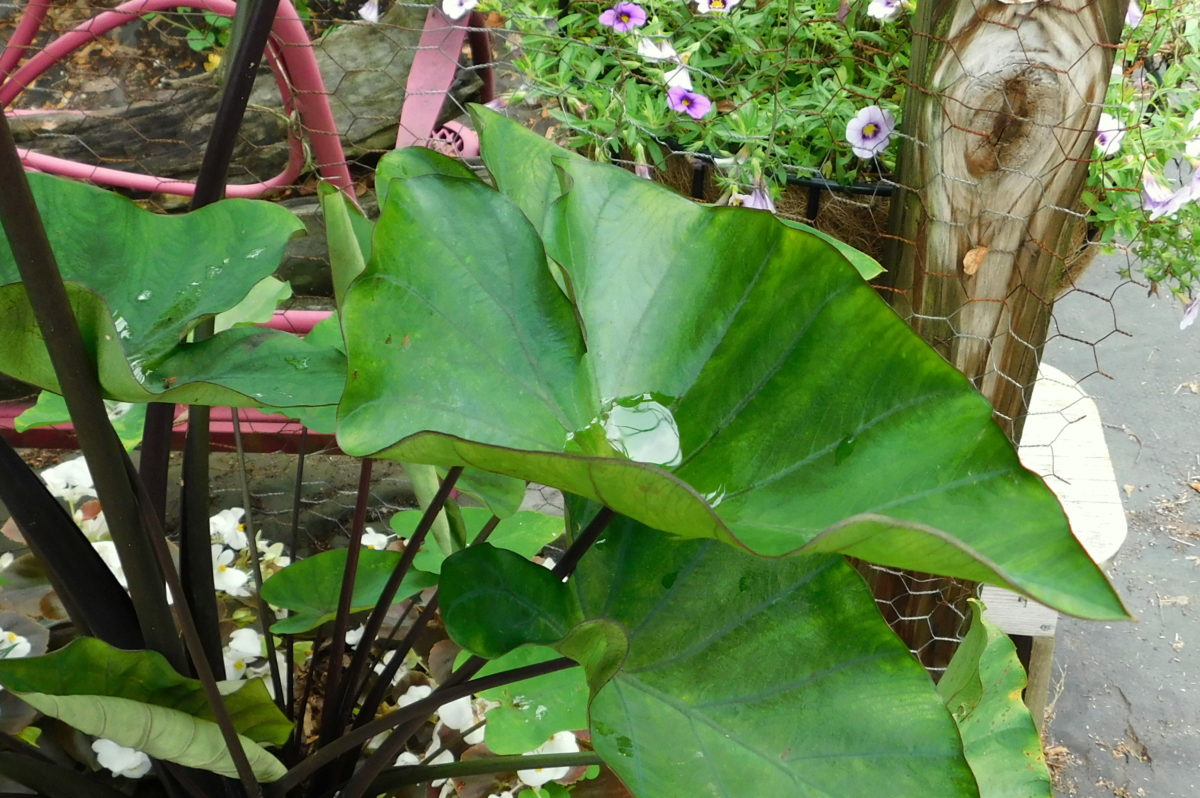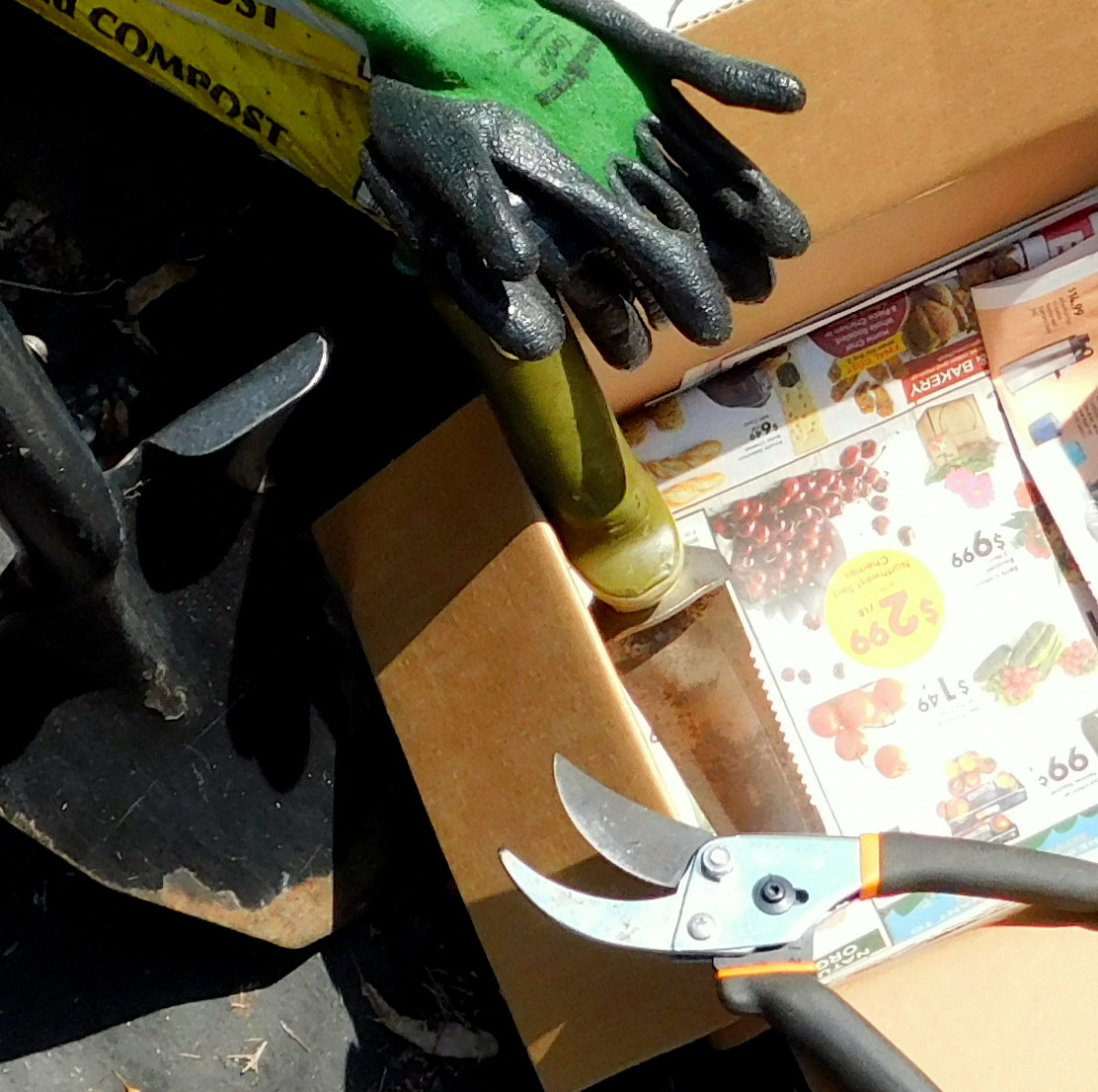
I've been looking for information on how to prep and store elephant ears for winter made easy. I get attached to my plants and don't want to lose one that is perfectly happy to go on.
Only our cold weather gets in the way. They cannot withstand freezing here in Zone 6.
I've seen various types of these tropicals (colocasia, alocasia and caladium) priced at more than $100 for ONE. Mine are not so dear, but I'm still not willing to treat them as annuals!
So I've been doing research and found some instructions that are simple, to share with you if you're looking for solutions to the same thing.
The leaves of Colocasia esculenta "Coffee Cups" are different in that they can catch water. I want to save this over the winter by getting it to go dormant following these instructions.
I've read that it's pretty simple to get them to do this, and to wake them back up in the spring.

Breatheable Grippy Garden Gloves
Shovel or other digging tool
Box for storage
Newspapers for wrapping (optional)

2. Prune off the leaves if not already done, and also excess roots. Again, take care not to bruise or harm the main bulb.
3. Shake off excess dirt. You want the bulbs to dry out to prevent mold or rot.
4. Let bulbs sit out for about a week or so to dry well. This should be done in a warm area, not outdoors in cold weather.
5. Optional: Wrap individually in newspaper.
6. Store in box.
7. Place box in a cool, dry and dark place, at about 40-60 degrees. Check every 3-4 weeks and remove any bulbs that show rot.
This method looks easy. It just takes some time to dry out the bulbs and the right kind of storage space, which has always been my challenge.
Our basement is rather warm, and I'm looking for the coolest place down there. Dry and dark are easy to accomplish.
I'm motivated to keep trying because I like tropical plants so much. I don't have the space I would need to keep them all as house plants until spring.
If you like these plants or other similar ones, you might benefit from testing this method yourself.
Only our cold weather gets in the way. They cannot withstand freezing here in Zone 6.
I've seen various types of these tropicals (colocasia, alocasia and caladium) priced at more than $100 for ONE. Mine are not so dear, but I'm still not willing to treat them as annuals!
So I've been doing research and found some instructions that are simple, to share with you if you're looking for solutions to the same thing.
The leaves of Colocasia esculenta "Coffee Cups" are different in that they can catch water. I want to save this over the winter by getting it to go dormant following these instructions.
I've read that it's pretty simple to get them to do this, and to wake them back up in the spring.

Supplies Needed
Premium Bypass Pruning Shears Hand PrunersBreatheable Grippy Garden Gloves
Shovel or other digging tool
Box for storage
Newspapers for wrapping (optional)

Step by Step Instructions
1. Dig the bulbs. You can let a frost take the leaves, or cut them before that time. Be sure not to nick the bulb while digging, so don’t get too close to the stems.2. Prune off the leaves if not already done, and also excess roots. Again, take care not to bruise or harm the main bulb.
3. Shake off excess dirt. You want the bulbs to dry out to prevent mold or rot.
4. Let bulbs sit out for about a week or so to dry well. This should be done in a warm area, not outdoors in cold weather.
5. Optional: Wrap individually in newspaper.
6. Store in box.
7. Place box in a cool, dry and dark place, at about 40-60 degrees. Check every 3-4 weeks and remove any bulbs that show rot.
This method looks easy. It just takes some time to dry out the bulbs and the right kind of storage space, which has always been my challenge.
Our basement is rather warm, and I'm looking for the coolest place down there. Dry and dark are easy to accomplish.
I'm motivated to keep trying because I like tropical plants so much. I don't have the space I would need to keep them all as house plants until spring.
If you like these plants or other similar ones, you might benefit from testing this method yourself.
